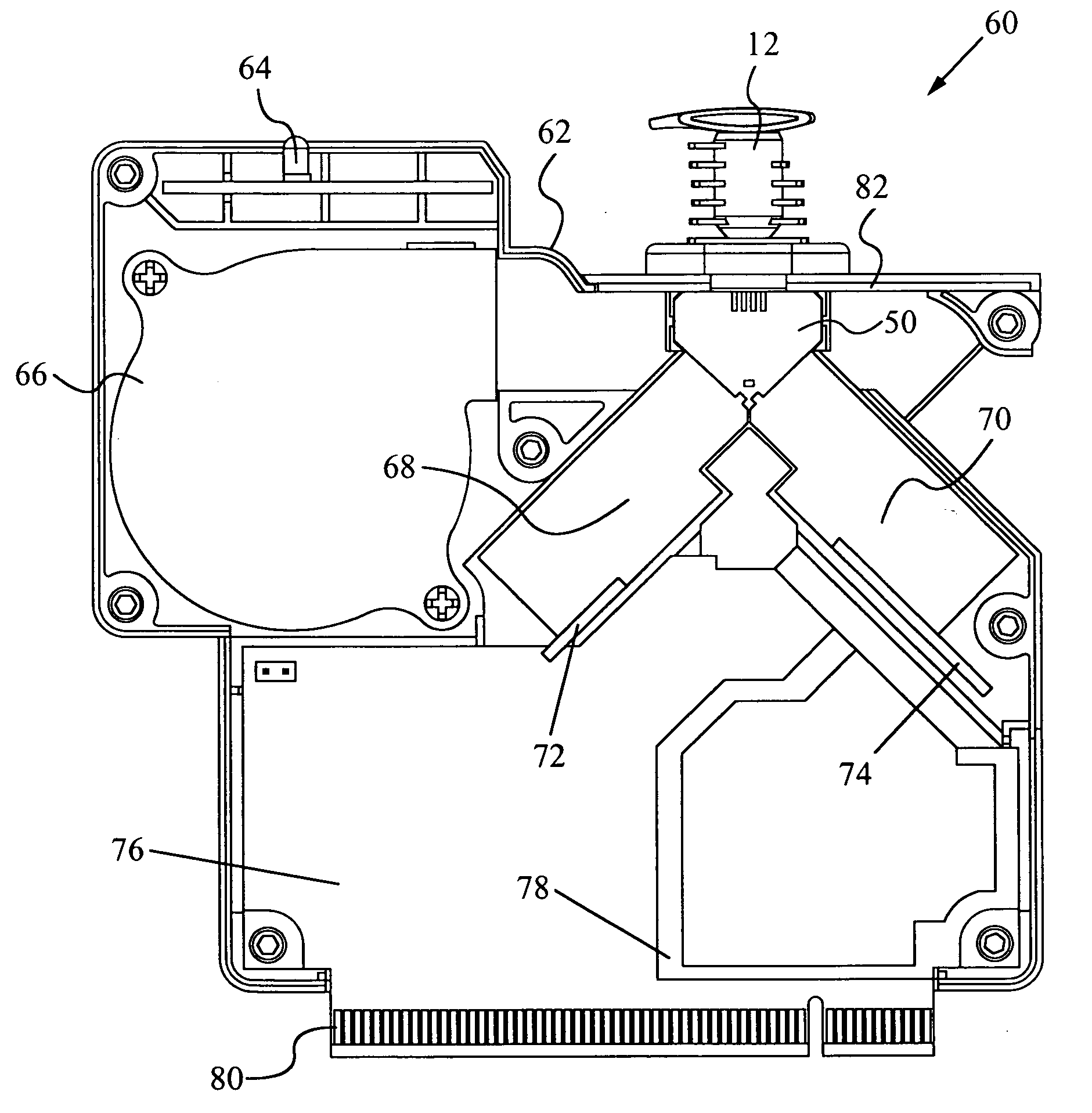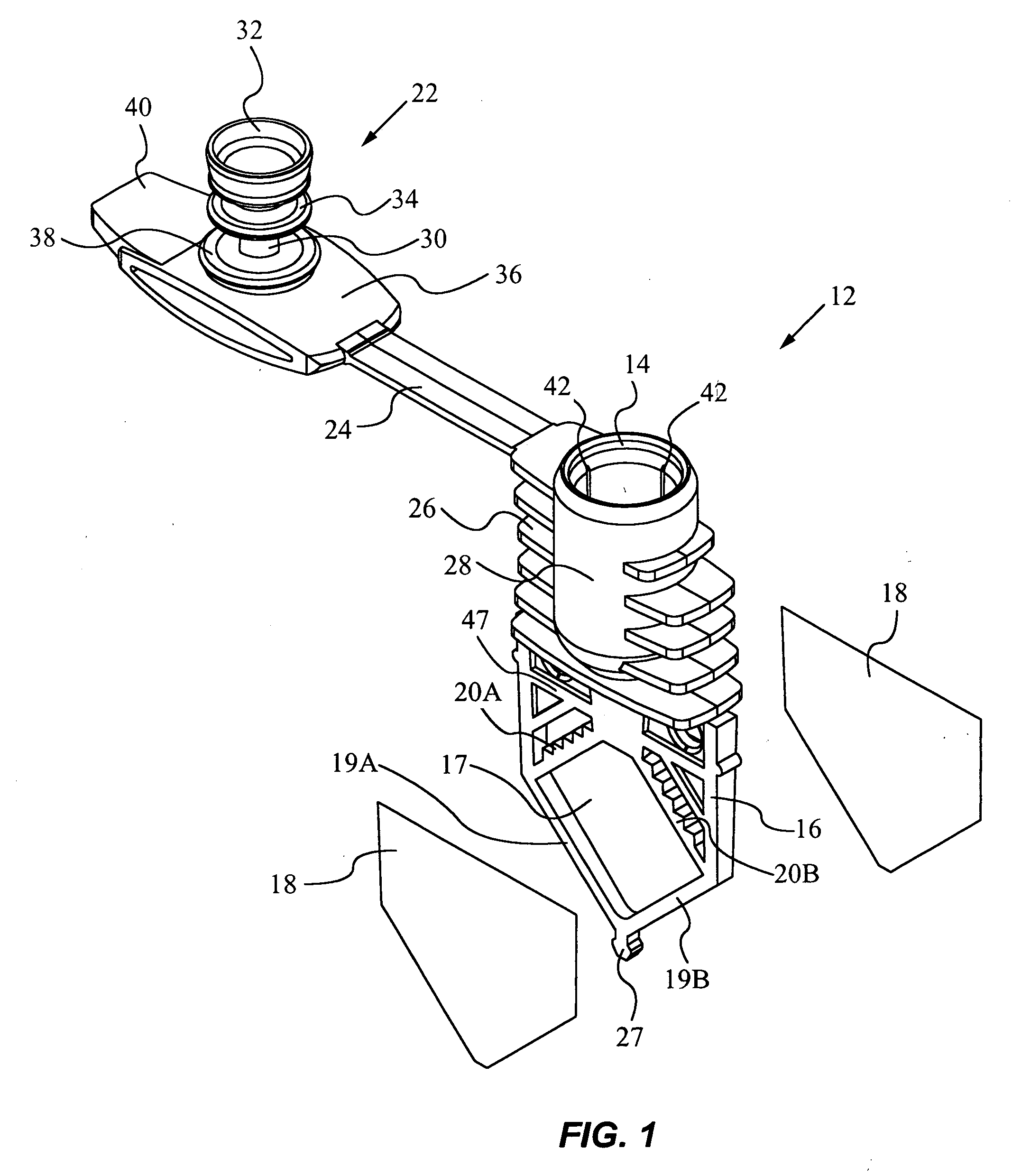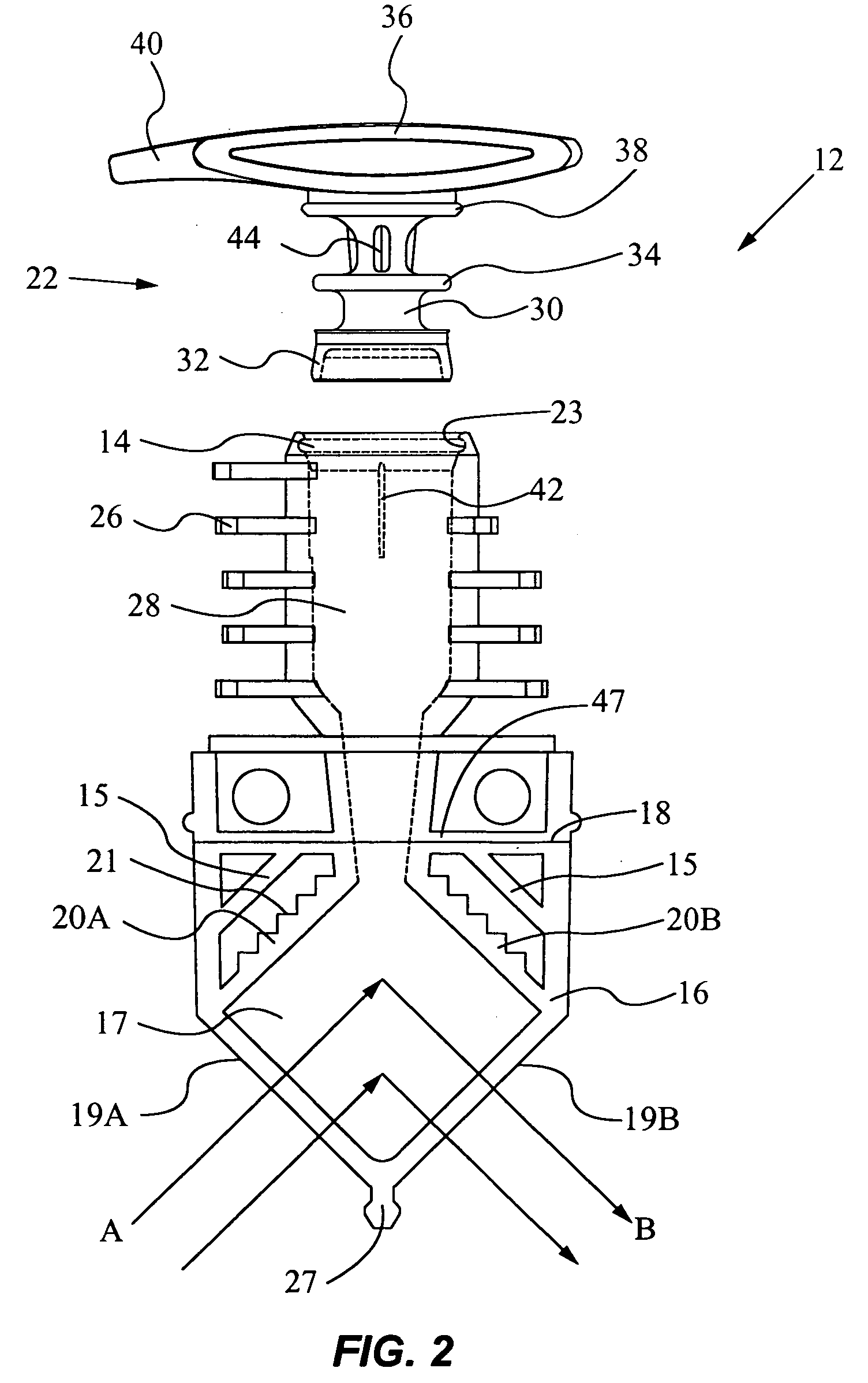[0013]The present invention overcomes the disadvantages of the prior art by providing an improved apparatus for thermally controlling and optically interrogating a reaction mixture. In contrast to the prior art instruments described above, the apparatus of the present invention permits extremely rapid heating and cooling of the mixture, ensures optimal
thermal transfer between the mixture and heating or cooling elements, provides real-time optical detection and monitoring of reaction products with increased detection sensitivity, and is easily configured for automated, high
throughput applications. The apparatus is useful for performing heat-exchanging chemical reactions, such as
nucleic acid amplification.
[0015]In the preferred embodiment, the reaction vessel includes first and second flexible sheets attached to opposite sides of the
rigid frame to form opposing major walls of the chamber. In this embodiment, the apparatus includes first and second thermal surfaces formed by first and second opposing plates positioned to receive the chamber of the vessel between. When the pressure in the chamber is increased, the flexible major walls expand outwardly to contact and conform to the inner surfaces of the plates. A resistive
heating element, such as a thick or thin film
resistor, is coupled to each plate for heating the plates. In addition, the apparatus includes a cooling device, such as a fan, for cooling the plates. Each of the plates is preferably constructed of a
ceramic material and has a thickness less than or equal to 1 mm for low
thermal mass. In particular, it is presently preferred that each of the plates have a
thermal mass less than about 5 J / ° C., more preferably less than 3 J / ° C., and most preferably less than 1 J / ° C. to enable extremely rapid heating and
cooling rates.
[0017]The pressurization of the chamber ensures that the flexible major walls of the vessel are forced to contact and conform to the inner surfaces of the plates, thus guaranteeing optimal
thermal contact between the major walls and the plates. In the preferred embodiment, the device for increasing pressure in the chamber comprises a
plunger which is inserted into the channel to compress gas in the vessel and thereby
increase pressure in the chamber. The
plunger preferably has a pressure
stroke in the channel sufficient to
increase pressure in the chamber to at least 2 psi of above the
ambient pressure external to the vessel, and more preferably to a pressure in the range of 8 to 15 psi above the
ambient pressure. In the preferred embodiment, the length of the pressure
stroke is controlled by one or more
pressure control grooves formed in the inner surface of the frame that defines the channel. The
pressure control grooves extend from the port to a predetermined depth in the channel to allow gas to escape from the channel and thereby prevent pressurization of the chamber until the
plunger reaches the predetermined depth. When the plunger reaches the predetermined depth, it establishes a seal with the walls of the channel and begins the pressure
stroke. The
pressure control grooves provide for highly controllable pressurization of the chamber and help prevent misalignment of the plunger in the channel.
[0019]In a second embodiment of the invention, the pressurization of vessel is performed by a pick-and-place
machine having a
machine head for addressing the vessel. The machine head has an axial bore for communicating with the channel. The pick-and-place machine also includes a pressure source in fluid communication with the bore for pressurizing the chamber of the vessel through the bore. In this embodiment, the apparatus also preferably includes a disposable adapter for placing the bore in fluid communication with the channel. The adapter is sized to be inserted into the channel such that the adapter establishes a seal with the walls of the channel. The disposable adapter preferably includes a valve (e.g., a
check valve) for preventing fluid from escaping from the vessel.
[0022]The apparatus of the present invention permits real-time monitoring and detection of reaction products in the vessel with improved optical sensitivity. In the preferred embodiment, at least two of the side walls of the chamber are optically transmissive and angularly offset from each other, preferably by an angle of about 90°. The apparatus further comprises an
optics system for optically interrogating the mixture contained in the chamber through the optically transmissive side walls. The
optics system includes at least one
light source for exciting the mixture through a first one of the side walls, and at least one
detector for detecting light emitted from the chamber through a second one of the side walls.
[0023]Optimum optical sensitivity may be attained by maximizing the optical sampling
path length of both the light beams exciting the labeled analytes in the reaction mixture and the emitted light that is detected. The thin, wide reaction vessel of the present invention optimizes detection sensitivity by providing maximum
optical path length per unit
analyte volume. In particular, the vessel is preferably constructed such that the ratio of the width of the chamber to the thickness of the chamber is at least 4:1, and such that the chamber has a thickness in the range of 0.5 to 2 mm. These parameters are presently preferred to provide a vessel having a relatively large average
optical path length through the chamber, while still keeping the chamber sufficiently thin to allow for extremely rapid heating and cooling of the reaction mixture.
 Login to View More
Login to View More 


